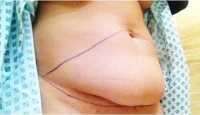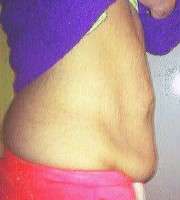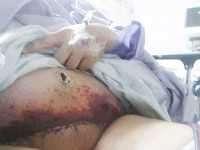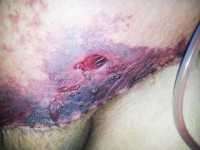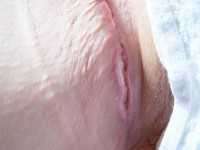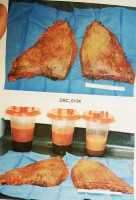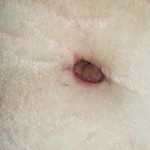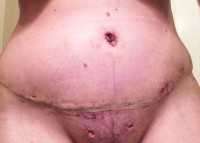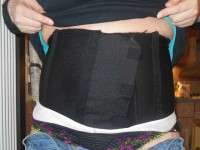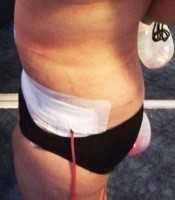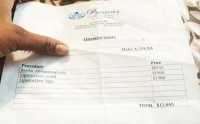You want to make tummy tuck, but want to learn more about the surgery? Find out more about tummy tuck at our website! Ask questions to experts for free, choose a suitable plastic surgeon at a reasonable price, and share your opinion.
What is a tummy tuck?
Tummy tuck or abdominoplasty – a complex surgery, which is carried out to restore the aesthetic proportions of the abdomen.
Tummy tuck is aimed at cutting of excess skin and fat deposits, which are formed after childbirth or due to the peculiarities of the structure of the body. Typically, a large proportion of patients are postpartum women.
Medical reasons for tummy tuck:
- skin folds, skin and fat “apron”;
- excess of skin and subcutaneous fat in the abdominal wall;
- expressed stretch marks of the skin;
- the discrepancy of rectus abdominis;
- noticeable postoperative scars in the abdomen;
- postnatal stretch marks of the skin;
- excess skin in the umbilical area;
- laxity and weakening of the abdominal muscles;
- lack of aesthetic contour of waist;
- stretched skin after rapid weight loss;
- the excess skin and excess fat mass;
- if there is fat in the abdominal wall, but is not possible to do liposuction due to reduced elasticity of the skin;
- umbilical, inguinal, postoperative hernia;
Even people with normal body weight can have hanging skin on abdomen. The most common causes for this are:
- pregnancy;
- aging;
- significant fluctuations in weight;
- heredity;
- undergone surgery.
And this, in turn, spoils the appearance of the person and brings a lot of discomfort and complexes. Thus, if a person has at least one of the above deviations, the doctor may advise a tummy tuck as a solution.
Contraindications for tummy tuck:
- diabetes;
- diseases of internal organs;
- obesity;
- a bleeding disorder;
- catarrhal diseases;
- pulmonary or cardiac failure;
- arterial hypertension;
- pregnancy planning in the next 12 months;
- post-surgical scars, which are located above the navel;
- acute infectious diseases;
- severe somatic pathology;
- cancer processes;
- psychiatric disorders;
- the patient’s age is less than 18 years;
- skin disorders: dermatitis, fungal infections, psoriasis;
- taking of certain medications;
- allergy;
- postoperative scar in the upper abdomen;
- pregnancy and lactation;
- inflammatory conditions in the area of surgical intervention.
Thus, if the patient has at least one of the above items, the tummy tuck is strictly prohibited. It is also worth noting that a similar surgery in any case can not be taken as a way to lose weight or treatment of obesity. Tummy tuck can have some of the risks associated with general anesthesia and local complications.
Tummy tuck complications:
- lymphorrhea
- suppuration of wound
- hematoma formation
- numbness or other changes in skin sensation (temporary or permanent)
- bleeding
- major wound separation
- fluid accumulation
- asymmetry
- skin loss
- visible scar
- recurrent looseness of skin
- skin discoloration
- swelling
- prolonged swelling
- pigmentation of the skin
- seroma
- persistent swelling in the legs
- possibility of revisional surgery
- hematoma (may occur in 5% of cases)
- pain (may persist for a long time)
- poor wound healing
- suture rupture
- nerve damage
- anesthesia complications
- fatty tissue found deep in the skin might die (fat necrosis)
- pain, which may persist
- keloid (heavy scar)
- death
Tummy tuck surgery
Before surgery will require not only a thorough medical examination and pass all the tests, but also adhere to certain guidelines. For example, 10 days before the tummy tuck is necessary to stop the use of drugs containing aspirin, stop smoking and drinking alcoholic beverages. For a couple of days before surgery, you need to follow only a liquid diet. The surgical intervention itself is performed on an empty stomach.
Preparing for tummy tuck
- You will need to have a blood test (general analysis and verification functions of blood clotting). If necessary, additional tests will be scheduled.
- Need to stop taking aspirin, refrain from smoking and alcohol for two weeks prior to surgery.
- You will need to buy a special compression garment (bandage), which you will need to wear for a month after surgery.
- Take care of painkillers: tablets or drops (if you are not allergic to this medication)
- On the morning of the day of surgery, you should take a shower and thoroughly (at least twice) wash the stomach area water with soap.
- Six hours prior surgery is prohibited to eat and drink. You can use chewing gum.
- It is recommended to wear comfortable clothes and shoes.
The duration of tummy tuck
Tummy tuck lasts an average of 1.5 – 2.5 hours. In some complex cases, surgery can last from 2 to 5 hours
Procedure of tummy tuck
Abdominoplasty lasts an average of 1.5 – 2.5 hours. Surgery can made by men or women. Before the operation is performed marking of incisions on the skin. Tummy tuck is carried out using a general anesthetic or epidural anesthesia. The skin is cut with sublunary incisions in the area iliac-inguinal folds, as well as over the symphysis pubis and in subcutaneous adipose fiber to the aponeurosis.
Plastic surgeon cuts the skin and fat flap, allocates navel on its “leg”. Then, surgeon sets integrity of the rectus abdominis on the midline using a continuous seam between the navel and the xiphoid process and lower to the symphysis pubis. Physician removes excess skin and fat flap. Then, the doctor makes a plastic of navel: he outputs navel to anterior abdominal wall through a newly created incision. Layered seams are superimposed on the wound.
Necessary to realize that to achieve a flat toned tummy only through tummy tuck impossible, but seeing photos of “before and after”, you can make sure that this procedure is very effective. If desired, after abdominoplasty, you can further adjust the figure by means of exercise and proper nutrition, and get a great result!
Plastic surgeon makes two punctures in the womb; drains are derived from them for active aspiration. Bandage is applied to the wound. Principle of tummy tuck is simple: excised the excess skin and subcutaneous fat, made a new skin tension.
This operation must be produced by a plastic surgeon who knows the anatomy and physiology of the soft tissues, the mechanism of their blood supply, as well as that have a sense of harmony, symmetry and aesthetics.
Tummy tuck post op
At the end of surgery, you will be transferred to the recovery room to recover from the anesthesia. You will be under the supervision a few hours. The medical staff will monitor the state of your consciousness, respiration, blood pressure and oxygen, pulse rate and other indicators.
After waking up from the anesthesia you will feel discomfort and tension in the abdominal area. As directed by the anesthesiologist, you will receive pain medication. If the dose is insufficient, it will be increased.
The operated area will look like after a severe trauma: on skin will be bruises and blemishes. A few weeks later, these phenomena will disappear. However, only after a few months it will be possible to judge the final outcome of the tummy tuck. Discharge from the hospital performed the next day after surgery.
Tummy tucks recovery
There is a feeling of mild discomfort in the abdomen in the postoperative period in patients during the first two weeks. After the surgery is recommended for 1.5 months to wear a special compression garment, as well as limit the overall physical activity for a month and physical stress on the abdominal area – for 3 months.
During the discharge from the hospital you will receive instructions on how to empty containers with daily fluid, deducible by drains, and to measure its quantity. You have to go to the doctor: the first time – to retrieve one drainage and again (a week after the surgery) – to retrieve the second.
It is recommended to take a shower on the next day after surgery.
If you have pain, you can take painkillers. In the early days you should take painkillers before the pain will become too strong. It is recommended to take Analgesic (tablets or drops) every six hours. If you feel intense pain until six hours, you can additionally take a pill. Do not take medicines that contain aspirin and non-steroidal anti-inflammatory drugs (NSAID). These drugs cause bleeding in the operated area.
Immediately contact to attending staff at the department of plastic surgery, if you have one of the following symptoms:
- temperature of 38 ° C (100.4 ° F) and above
- significant redness on the surgery area
- shortness of breath
Rays of the sun should not shine on the scar the first 5 months. After about 7 – 8 weeks after surgery, you can resume again exercises. In the postoperative period it is recommended not to drink alcohol and do not smoke. Sauna and a steam bath are not recommended for a few months after surgery.
How much is a tummy tuck
Tummy tuck cost varies in different countries, as well as within regions. Cost of the surgery depends on many conditions, such as patient age, weight and condition of health, operational convenience.
There may also be other costs after the surgical operation, which depend on the individual characteristics of the patient. For example, the cost of abdominoplasty does not include post-operative consultation. In the United States the cost of abdominoplasty varies from $ 4,000 to 20,000 dollars. The average cost of a tummy tuck is $5,217 in 2013 year.
The cost of abdominoplasty usually includes:
- Surgeon’s fee
- Medical tests
- Prescriptions for medication
- Anesthesia fees
- Surgical facility costs
- Post-surgery compression garment
- Operational room comfortable
Also, you may need subsequent procedures for the correction of a scar, including additional surgery. The cost of these procedures is not included in the initial cost of the tummy tuck.
Will health insurance cover a tummy tuck?
Typically, health insurance does not cover the tummy tuck and its complications. However, many plastic surgeons offer patients financial plans.
